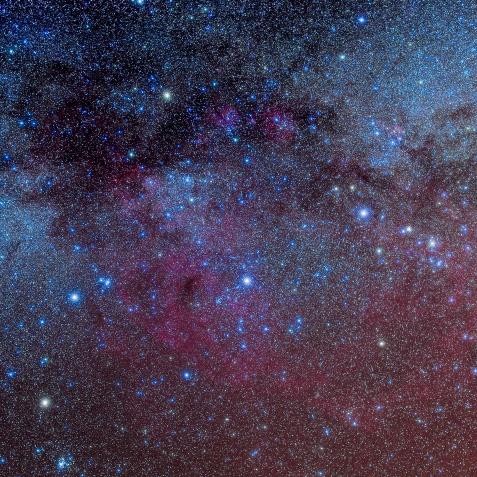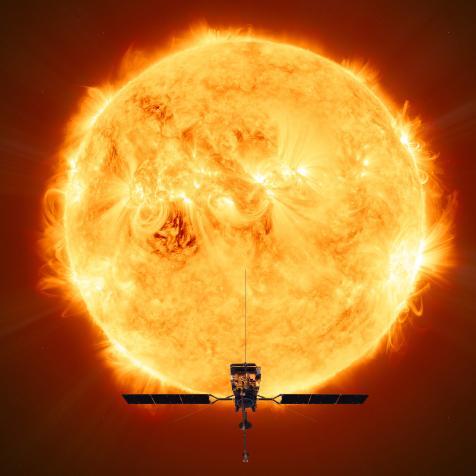
X-ray: Chandra: NASA/CXC/NRL/S. Giacintucci, et al., XMM-Newton: ESA/XMM-Newton; Radio: NCRA/TIFR/GMRT; Infrared: 2MASS/UMass/IPAC-Caltech/NASA/NSF
Going for Gold: The Biggest Explosion in the Universe

Meet the humble Ophiuchus galaxy cluster. It’s just another dense clump of galaxies, one of approximately a bajillion, dotting the universe. It sits about 240 million lightyears away from Earth.
And its heart is missing.
Back in 2016, astronomers using the Chandra X-ray telescope were taking detailed pictures of the core of the galaxy cluster. Besides the usual assortment of galaxies, each cluster is also filled with a hot, thin plasma. This plasma is so effervescent that it would register as a vacuum in Earth laboratories, but so hot that it’s capable of emitting intense X-ray radiation.
In the process of their studies, they were surprised to find a giant cavity, a void tens of thousands of light-years wide. That hole is big enough that you could fit 15 Milky Way galaxies, laid out side by side like cosmic ants on a log, within it.

VW Pics
Ophiuchus in the summer sky.
Where there’s smoke there’s a fire, and where there’s a giant cavity in a volume of gas, there’s an explosion.
Indeed, the energy needed to blow a hole that big is about 10^61 ergs. Don’t worry too much about what an “erg” is, just know that humanity’s total energy consumption every year is a measly 10^20 ergs – it would take about a million billion billion billion years for us humans to consume the amount of energy needed to excavate that void.
That’s a lot of energy.
Whatever caused the hole in the Ophiuchus galaxy cluster is the most powerful explosion known to humanity. It’s definitely the current gold-medal record holder in the game of giant, cosmic explosions.
What caused it was, ironically, a black hole. Black holes are known for their enormous sucking power, but are also capable of generating these immense explosions.
What happens is that as gas and dust swirl down towards a black hole, it compresses and heats up. There’s a lot of room outside a black hole, and not so much in it, and so the gas has to occupy a smaller volume. That makes it heat up. And super-heated, spinning gas powers up truly enormous electric and magnetic fields.

Universal History Archive
From NASA's WISE, the Rho Ophiuchi cloud rising above the plane of the Milky Way in the night sky.
Those electric and magnetic fields swirl around the black hole, forcing the surrounding material to follow their direction. Some gas and dust end up falling below the event horizon of the black hole, never to be seen again. But some get whipped around, following complex, curving trajectories.
That material then blasts out of the poles of the spinning black hole, like two giant search lights piercing into the vast darkness of space. These jets can reach tens of thousands of light-years. And where they meet resistance, like the thin (but still very real) gas within a galaxy cluster, it blows the whole thing wide open.
Astronomers aren’t sure when this particular magnificent reaction happened, or what exactly the giant black hole in the center of the Ophiuchus cluster ate.
But it definitely deserved its place on the podium.



















